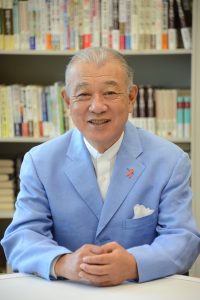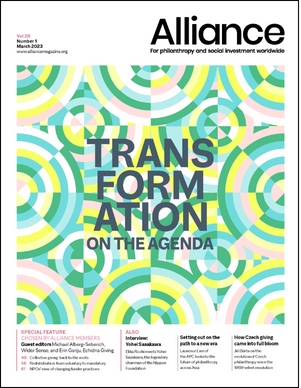Now 83, Yohei Sasakawa has been at the head of the Nippon Foundation since 1981. As he explained to Alliance digital editor Elika Roohi when the two sat down to talk at the Asia Philanthropy Congress in Japan, his long service and commitment give him not just a unique perspective on the work of the Nippon Foundation and the evolution of Japanese philanthropy generally, it also enables the foundation to engage in the sort of long-term planning that others might envy.
 Yohei Saskawa. Credit: Nippon Foundation.
Yohei Saskawa. Credit: Nippon Foundation.
Eika Roohi: How has the Nippon Foundation evolved since it was founded in the 1960s?
Yohei Sasakawa: Slightly similar to the Hong Kong Jockey Club but unique to Japan, motorboat races are held throughout the year, and under law, about three per cent of the sales from the races pass through the Nippon Foundation. We use that money to conduct and support various philanthropic activities, but we also conduct our own fundraising activities as well. The concept of a philanthropic foundation comes from the US and Europe and connotes an organisation that provides money to NPOs or NGOs so that they can carry out their work. However, in the period when we were starting our activities, while we wanted to give funds to other NPOs or NGOs, very few existed in Japan, so there was no other way than to conduct activities on our own. And so today, 50 per cent of our funds go to support organisations around the world, while the other 50 per cent is used to solve social issues ourselves, through collaboration with affiliates that we have established in different fields. While in the past this was seen as a unique approach, even by western organisations, it has become very much the Nippon Foundation way, and today we see other organisations adopting this way of working. Another unique feature of the Nippon Foundation is its ability to plan, say, 10, 20 or even 30 years or so ahead. Other foundations need to worry that the person at the top will be replaced after 10 years at the most, which means they are only able to plan over a shorter timespan.
Subscribe now from only £45 a year!
This article is only available for our subscribers
Existing users can login here






